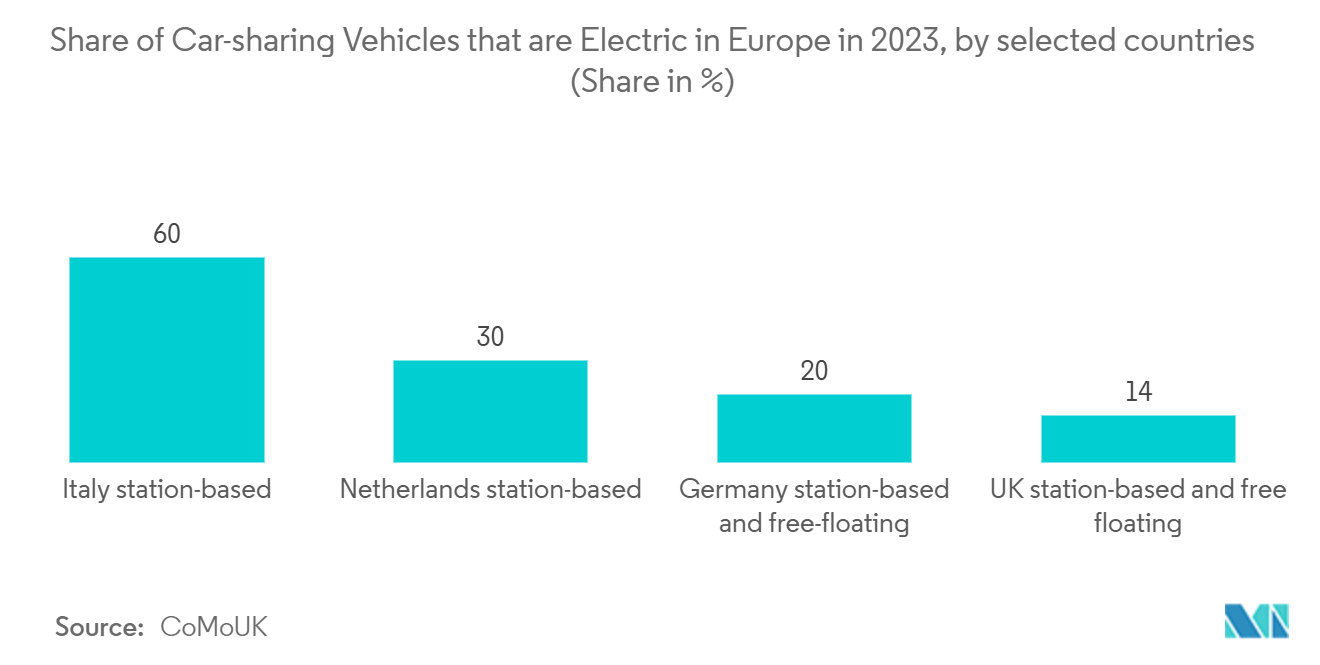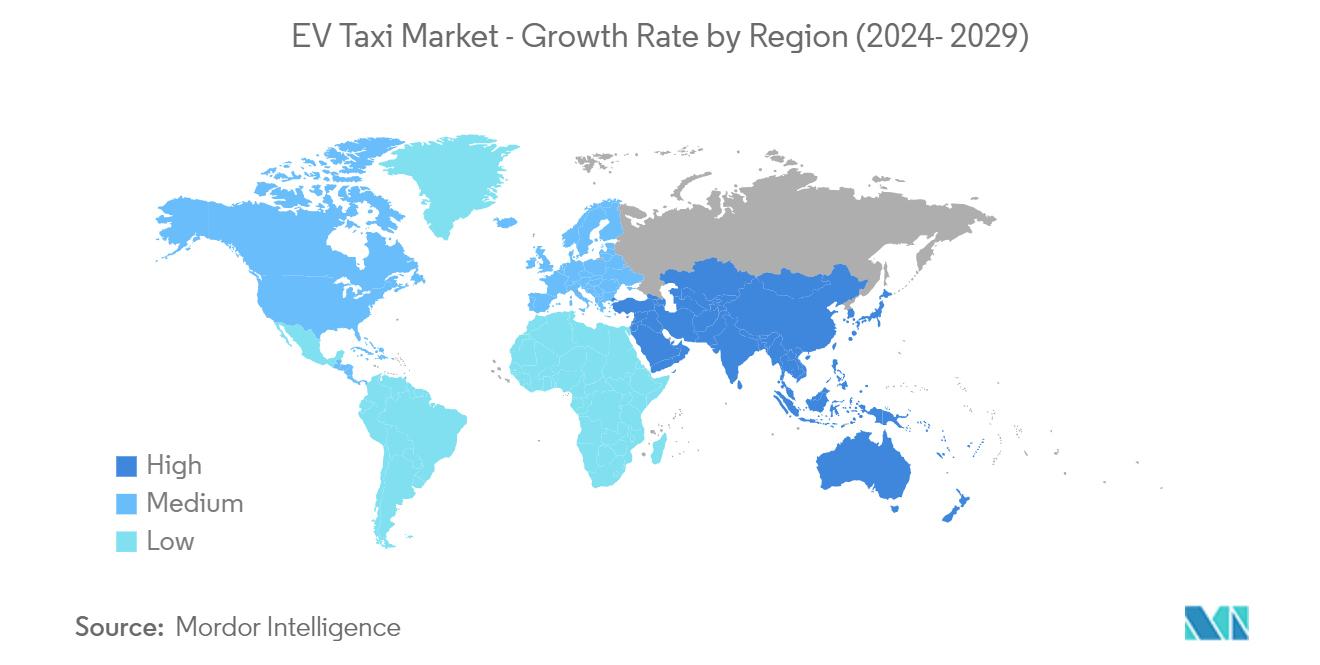Market Trends of EV Taxi Industry
The Four-wheeler Taxi Vehicle Type Expected to Hold a Significant Market Share
One of the primary factors fuelling the four-wheeler EV taxi segment’s growth is the increased adoption of electric vehicles worldwide, mostly because of the stringent governmental regulations against pollution and environmental aspects. The demand for electric vehicles is directly linked to the infrastructure available to charge these vehicles in the specific country.
Hence, to boost the demand for electric vehicles, governments are continuously increasing their spending to enhance the infrastructure in their region and provide a sufficient number of charging stations and other financial benefits to end users so that they are attracted toward these eco-friendly vehicles that help reduce pollution levels. Several players in the market are adopting various greener initiatives, and this, in turn, is anticipated to boost the market over the forecast period. For instance,
- In February 2023, Uber Technologies, India’s leading ride-sharing company, signed a Memorandum of understanding (MoU) with Tata Motors, India’s leading automobile manufacturer and the pioneer of India’s EV evolution, to bring 25,000 XPRES–T EVs into their premium category service. Aligned toward its goal of a clean and green environment, Tata Motors will be aiding Uber in electrifying its services across the Indian cities of Delhi NCR, Mumbai, Kolkata, Chennai, Hyderabad, Bengaluru, and Ahmedabad. The company will begin the delivery of the cars to Uber fleet partners in a phased manner.
Further, Norway, which has a high adoption rate of electric vehicles and a waiting list for the delivery of EVs, is enhancing the infrastructure for EV taxis very rapidly. Even with the electrification of other modes of transportation, particularly private cars, the use of electric taxis remains marginal. Norway's capital, Oslo, has the highest number of electric cars per capita in the world, but only 2% of the taxi fleet is fully electric.
- Car-sharing fleets in many European countries already contain a large number of electric vehicles. As of 2023, 60% of Italy's station-based car-sharing fleet consisted of electric cars, while this figure stood at around 30% in the Netherlands.
As these abovementioned factors continue to develop, they are likely to drive the growth trajectory over the coming years. This is expected to have a subsequent positive impact on the electric vehicle taxi market.

Asia-Pacific Remains the Largest Regional Market
Asia-Pacific is expected to be the largest regional market for electric vehicle taxis. The demand is driven by the high adoption rate of electric vehicles in the region and the growing demand for taxi fleets. The region has large economies like India and China, which are very highly populated, and the demand for taxi services in the region is also growing with the rising rate of urbanization in the region because of the developing nature of these economies.
- As of August 2023, there were a little under 64,000 company taxis registered in South Korea.
- In 2023, the penetration rate of electric vehicles in India reached 6.4%, a significant increase in comparison with a decade ago. More than 1.5 million electric vehicles were sold in India in 2023, the majority of which were electric two-wheelers.
There are several major players in the region, like BYD, which sells 60% of its pure electric cars for public transport. Moreover, The "Support Measures to Encourage the Development of Electric Vehicle (EV) Charging and Battery Swap Facilities in Shanghai" were jointly issued by the Shanghai Municipal Development & Reform Commission (SMDRC), which are further expected to drive the market.
Support for the construction of pilot taxi charging stations is also being provided in China. Pilot stations built in 2022 will receive a financial subsidy equal to 30% of the cost of charging equipment. Subsidies will be made available for the installation of advanced battery swap stations that meet relevant requirements in certain public service sectors such as ports, logistics, sanitation, and taxis.
Similarly, in India, the government is pushing major fleet operators like Ola and Uber to expand their electric vehicle fleet and convert 40% of vehicles to electric by the end of 2026. Niti Aayog officials and the Ministries of Road Transport, Power, Renewable Energy, and Steel, as well as the Departments of Heavy Industries and Trade, were among those recommending taxi operators in India to gradually convert to electric in India. Manufacturers in India are planning to take initiatives and launch new electric products for taxi services.


